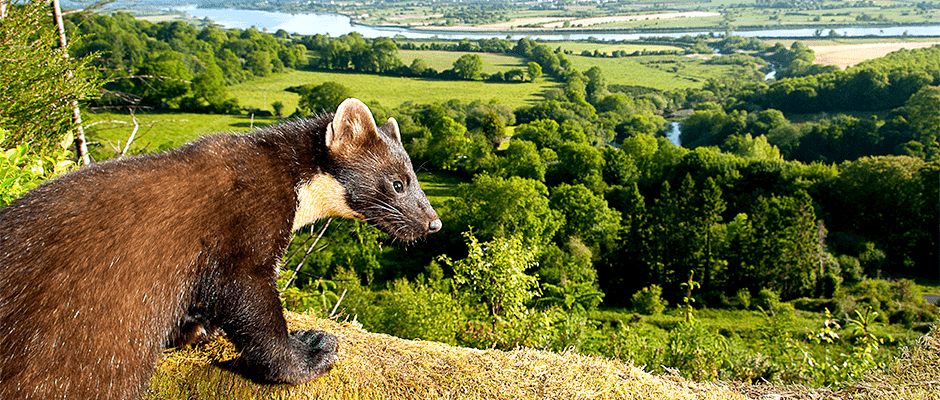Share this article
In united animal kingdom, martens control invading squirrels
North America has its share of invasive species to contend with, but our own natives have been known to become invasives abroad, too.
In the United Kingdom, where invasive American gray squirrels (Sciurus carolinensis) compete with native red squirrels (Sciurus vulgaris), biologists found the return of another native coming to the rescue: pine martens (Martes martes).
Rebounding native pine martens not only help control the American intruders, researchers found — they also help the red squirrels prosper.
“There is a lot of money and effort put into removing gray squirrels in the UK, and all of a sudden, a natural mechanism of predator-prey dynamics came along and did some of the work for us,” said Chris Sutherland an assistant professor at the University of Massachusetts-Amherst and co-author of a recent study published in Proceedings of the Royal Society B.
In 2013, Emma Sheehy, lead author of the current study found evidence in Ireland that where pine martens were, returning to their historic range, there were fewer gray squirrels, and red squirrels were also returning.. Sheehy, Sutherland and their colleagues decided to test this hypothesis in Scotland.=
Before the pine marten recovery, gray squirrels were outcompeting red squirrels for resources and carried the disease squirrel pox, which affects red squirrels, but not grays. But pine martens seemed to suppress the gray squirrel population
To test this idea, the team used feeder boxes with sticky tape underneath a flip lid that they placed throughout Scotland. They lured the three species into the feeder with nuts and seeds so when they lifted the lid, their hair stuck to the tape. “It’s a cool contraption where we were able to collect the hair from all three species that we were interested in,” he said.
Then, the team identified which sites the species occupied based on their hair. They also used DNA from pine marten hair to identify individuals and develop spatial models to estimate population sizes, home ranges and connectivity.
“Lo and behold, higher pine marten activity resulted in lower gray squirrel presence and higher red squirrel presence,” he said. “We were happy to find that, once we did a more robust study, that the exact pattern found in Ireland held true in Scotland too.”
Sutherland said martens are recovering largely due to their protected status, since 1981 and an increase in forestry in recent decades, and managing landscapes for native species is obviously beneficial.
“We can’t rely on pine martens alone to solve the squirrel problem, but we can benefit all native species such as the pine marten and red squirrel and stack the deck in favor of native species and against invasive species,” he said.
Header Image: A pine marten looks over a hilltop in the Ireland. The pine marten can benefit native squirrels and control invasive ones. ©Maurice Flynn








